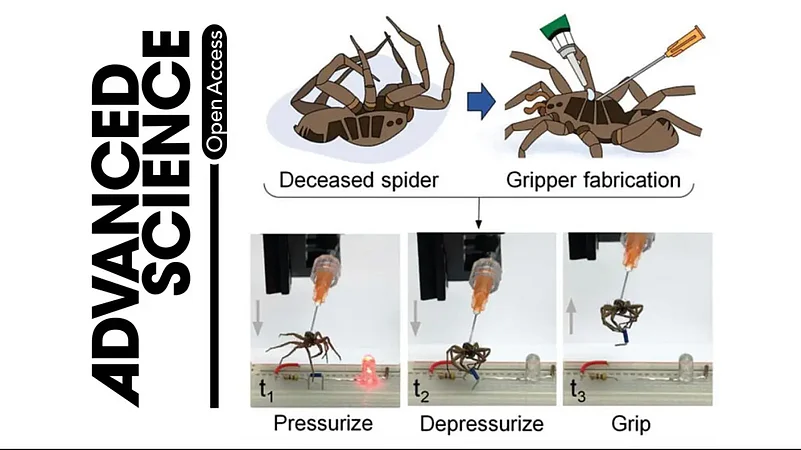Scientists have turned dead spiders into robotic grippers and are calling this area of research as "necrobotics" — literally meaning the robotics of the dead.
Scientists at Rice University in America's Texas have found a way a to use dead spiders into claw-like robots. They found why spiders always curled up upon their death and figured out a way to open and close their legs at will after their death, enabling their usage as claw-like robotic arms.
Rice University experts figured out that spiders' bodies inject a fluid into theri legs to open them outwards. This is why they curled up upon death as they could no longer inject that fluid after death. Experts replaced the fluid with air and managed to expand spiders' legs.
Here we explain what exactly the scientists achieved, what's the mechanism they used to do it, and what are it's implications.
Science behind turning spiders into robots
Spiders and humans have different mechanisms to move their limbs. While humans move limbs by an action of opposing muscles, spiders only have one flexor muscle.
"While humans move their limbs using pairs of antagonistic muscles, like biceps and triceps, spiders’ legs contain only a single flexor muscle that draws the leg inward," explains The Verge.
To move legs outwards, spiders don't have muscles but have a hydraulic system. Popular Mechanics explains the mechanism: "When a spider wants to straighten its legs to move, the prosoma section where its legs attach to its body ejects fluid into the legs, pushing them out straight...Once it’s dead, though, there's no more liquid pressure to uncurl the legs "
Scientists at Rice University solved this by artificially injecting air into spiders' legs — just like fluid would be injected when they were alive.
They released a video showing how it worked. A spider would be injected with air to spread it legs around any object. Then as you extract that air, the legs would close and grip that object. Then you could lift that object just like a mechanical gripper would. The type of spiders —wolf spiders— that Rice University experts worked on could lift up to 130 per cent of their body weight.
Practical applications of spider robots
While being able to turn dead spiders into mechanical grippers sounds amazing, does it have any practical applications?
There are definitely a few applications, according to Rice University experts who did this.
"There are a lot of pick-and-place tasks we could look into, repetitive tasks like sorting or moving objects around at these small scales, and maybe even things like assembly of microelectronics," said Daniel J. Preston, an Assistant Professor at Rice whose lab made this discover.
"Another application could be deploying it to capture smaller insects in nature, because it’s inherently camouflaged," said the study's lead author and Rice graduate student Faye Yap.
Experts emphasise spiders remain dead
While some reports use the word "reanimate" for what Daniel J Preston, Faye Yap, and others at Rice University achieved, Preston emphasised that it's incorrect to say so. The spiders remains dead.
"Preston and Yap are aware the experiments may sound to some people like the stuff of nightmares, but they said what they’re doing doesn't qualify as reanimation," noted a press release by Rice University.
Preston further said, "Despite looking like it might have come back to life, we're certain that it's inanimate, and we're using it in this case strictly as a material derived from a once-living spider. It's providing us with something really useful."


























